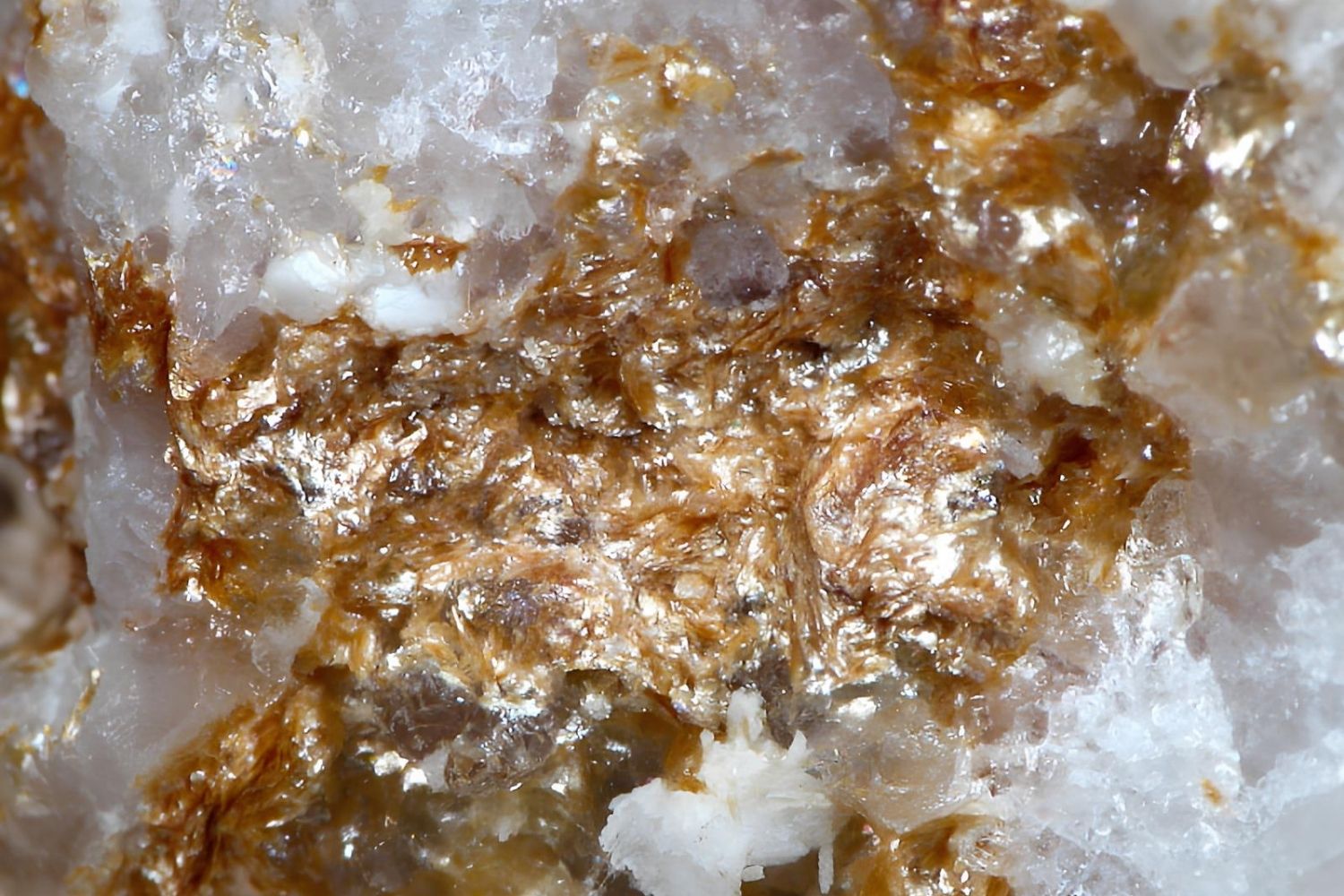
Ganophyllite is a rare mineral that often intrigues geology enthusiasts and collectors alike. Found primarily in manganese-rich deposits, this mineral boasts a unique crystal structure and fascinating properties. But what makes Ganophyllite so special? Its rarity and distinctive characteristics set it apart from more common minerals. With a name derived from Greek words meaning "leaf" and "to love," Ganophyllite's leaf-like crystal formations are a sight to behold. Whether you're a seasoned geologist or just curious about the natural world, learning about Ganophyllite can be both educational and exciting. Ready to dive into the world of Ganophyllite? Here are 30 intriguing facts that will expand your knowledge and appreciation for this extraordinary mineral.
Key Takeaways:
- Ganophyllite is a rare mineral with a shiny, leaf-like appearance, found in specific locations worldwide. Its unique properties make it a valuable specimen for collectors and a subject of study for mineralogists.
- Ganophyllite's crystal structure, pleochroism, and fluorescence under UV light make it a fascinating mineral for geological studies. Its rarity and intriguing characteristics continue to captivate scientists and collectors alike.
What is Ganophyllite?
Ganophyllite is a rare mineral that belongs to the phyllosilicate group. It is known for its unique crystal structure and intriguing properties. Let's dive into some fascinating facts about this mineral.
- Ganophyllite was first discovered in Sweden in 1890.
- The name "Ganophyllite" comes from the Greek words "ganos" (brightness) and "phyllon" (leaf), referring to its shiny, leaf-like appearance.
- This mineral typically forms in manganese-rich metamorphic rocks.
- It is often found in association with other manganese minerals like rhodonite and spessartine.
- Ganophyllite crystals are usually brown, reddish-brown, or yellowish-brown in color.
- The mineral has a monoclinic crystal system, meaning its crystals form in a specific, elongated shape.
- It has a Mohs hardness of 4 to 5, making it relatively soft compared to other minerals.
- Ganophyllite has a specific gravity of 3.1 to 3.3, which is a measure of its density.
- The mineral is translucent to opaque, allowing some light to pass through its crystals.
- It has a pearly to vitreous luster, giving it a shiny, glass-like appearance.
Where Can You Find Ganophyllite?
Ganophyllite is not a common mineral, but it can be found in specific locations around the world. Here are some places where this mineral has been discovered.
- Sweden, where it was first identified, remains a significant source of ganophyllite.
- The United States, particularly in the Franklin and Sterling Hill mines in New Jersey, is another notable location.
- Japan has also reported occurrences of ganophyllite, especially in the Chichibu mine.
- In Canada, ganophyllite has been found in the Kaso mine in Quebec.
- South Africa's Kalahari Manganese Field is another location where this mineral can be found.
- Ganophyllite has also been discovered in the Harz Mountains of Germany.
- The mineral has been reported in the Otjosondu manganese field in Namibia.
- In Australia, ganophyllite has been found in the Woodie Woodie mine in Western Australia.
- Russia's Ural Mountains are another source of this rare mineral.
- Finally, ganophyllite has been discovered in the Imini mine in Morocco.
Unique Properties of Ganophyllite
Ganophyllite has several unique properties that make it an interesting subject of study for mineralogists and collectors alike.
- The mineral's crystal structure consists of layers of silicate tetrahedra, which contribute to its leaf-like appearance.
- Ganophyllite is known for its pleochroism, meaning it can show different colors when viewed from different angles.
- It exhibits perfect cleavage in one direction, allowing it to split easily along specific planes.
- The mineral can fluoresce under ultraviolet light, emitting a bright glow.
- Ganophyllite is often used as an indicator mineral in geological studies to identify manganese-rich environments.
- It can alter to other minerals over time, such as braunite or hausmannite, through a process called metamorphism.
- The mineral's unique properties make it a valuable specimen for collectors and museums.
- Ganophyllite is often studied to understand the geological processes that lead to the formation of manganese deposits.
- Its rarity and unique characteristics make it a sought-after mineral for scientific research.
- Finally, ganophyllite's distinctive appearance and properties continue to intrigue and fascinate those who study it.
The Final Word on Ganophyllite
Ganophyllite, a rare mineral, holds a unique place in the world of geology. Found in manganese-rich deposits, it boasts a striking appearance with its brownish-red to orange hues. This mineral's structure, composed of silicate sheets, makes it fascinating for scientists and collectors alike. Despite its rarity, ganophyllite has been discovered in locations like Sweden, Japan, and the United States. Its formation process involves complex geological conditions, adding to its allure.
For those passionate about minerals, ganophyllite represents a remarkable find. Whether you're a seasoned collector or just starting, understanding its properties and origins can deepen your appreciation for this mineral. So next time you come across ganophyllite, you'll know you're looking at a piece of Earth's intricate history. Keep exploring and learning—there's always something new to discover in the world of minerals.
Frequently Asked Questions
Was this page helpful?
Our commitment to delivering trustworthy and engaging content is at the heart of what we do. Each fact on our site is contributed by real users like you, bringing a wealth of diverse insights and information. To ensure the highest standards of accuracy and reliability, our dedicated editors meticulously review each submission. This process guarantees that the facts we share are not only fascinating but also credible. Trust in our commitment to quality and authenticity as you explore and learn with us.
